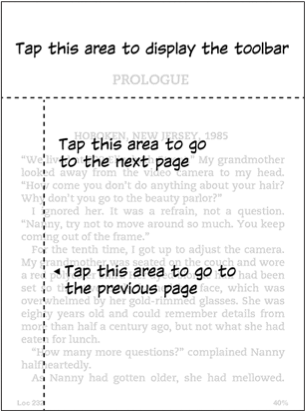I finally ordered a Kindle Paperwhite last week. I’ve had a Kindle Keyboard for two years, and I love it, but I decided I’d try out the Paperwhite because of the higher color contrast.
The Paperwhite arrived yesterday. I really wanted to like it. But my experience with it so far is pretty disappointing.
I’m left-handed, and I find that turning the page on the Paperwhite — the thing you do more than anything else on the Kindle — is a pain in the ass.
WIth the old Kindle Keyboard, I could rest my thumb on the page-turning button while reading, and when I wanted to go to the next page I would just apply light pressure to the button, barely needing to move my thumb at all. It was practically automatic. But turning the page on the Paperwhite is much more difficult.
In order to go to the next page on the Paperwhite, you touch the screen. That would be fine if I were holding the Kindle with my right hand, because my right thumb could rest on the bezel while reading, and to turn the page I could just gently rock my thumb and touch the right edge of the screen where it meets the bezel.
It doesn’t work that way if you hold the Kindle with your left hand, because the left half-inch or so of the screen is reserved for going to the *previous* page:

So when I’m holding the Kindle with my left hand — which is the way I hold the Kindle — I need to lift my thumb from the bezel, move it at least 3/4 of an inch sideways, and then touch the screen. If I don’t move my thumb far enough to the right, I accidentally go back a page, so I need to overcompensate and move my thumb even further into the main tap zone than it should need to go. And then, when I move my thumb back to the bezel, I have to make sure I don’t accidentally touch the left edge of the screen, or else I wind up go back to the previous page. This may not sound like a big deal, but try doing it several dozen times, or even 100 or 200 times, in one reading session. It’s a total pain. It also destabilizes the Kindle in your hand, which is not good when you’re standing on a moving subway.
I did not realize how big of a problem this would be. And ridiculously, there is no way to change the tap zones in the Settings menu.
I miss the page-turning buttons. Not everything has to be about touchscreens.
So unfortunately I’m going to return the Paperwhite and stick with my old Kindle Keyboard until they release either a software update or a new Kindle with page-turning buttons. What a disappointment.
